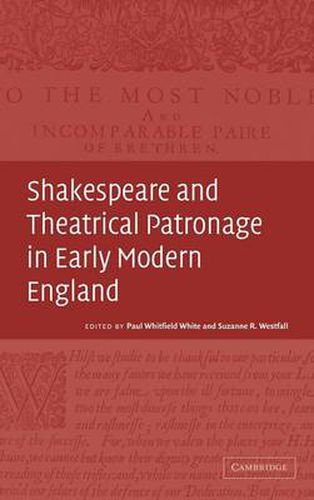Readings Newsletter
Become a Readings Member to make your shopping experience even easier.
Sign in or sign up for free!
You’re not far away from qualifying for FREE standard shipping within Australia
You’ve qualified for FREE standard shipping within Australia
The cart is loading…






During the past quarter of a century, the study of patronage-theatre relations in early modern England has developed considerably. This, however, is the first extensive, wide-ranging, and representative study of patronage as it relates to Shakespeare and the theatrical culture of his time. Twelve distinguished theatre historians address such questions as: What important functions did patronage have for the theatre during this period? How, in turn, did the theatre impact and represent patronage? Where do paying spectators and purchasers of printed drama fit into the discussion of patronage? The authors also show how patronage practices changed and developed from the early Tudor period to the years in which Shakespeare was the English theatre’s leading artist. This important book will appeal to scholars of Renaissance social history as well as those who focus on Shakespeare and his playwriting contemporaries.
$9.00 standard shipping within Australia
FREE standard shipping within Australia for orders over $100.00
Express & International shipping calculated at checkout
During the past quarter of a century, the study of patronage-theatre relations in early modern England has developed considerably. This, however, is the first extensive, wide-ranging, and representative study of patronage as it relates to Shakespeare and the theatrical culture of his time. Twelve distinguished theatre historians address such questions as: What important functions did patronage have for the theatre during this period? How, in turn, did the theatre impact and represent patronage? Where do paying spectators and purchasers of printed drama fit into the discussion of patronage? The authors also show how patronage practices changed and developed from the early Tudor period to the years in which Shakespeare was the English theatre’s leading artist. This important book will appeal to scholars of Renaissance social history as well as those who focus on Shakespeare and his playwriting contemporaries.